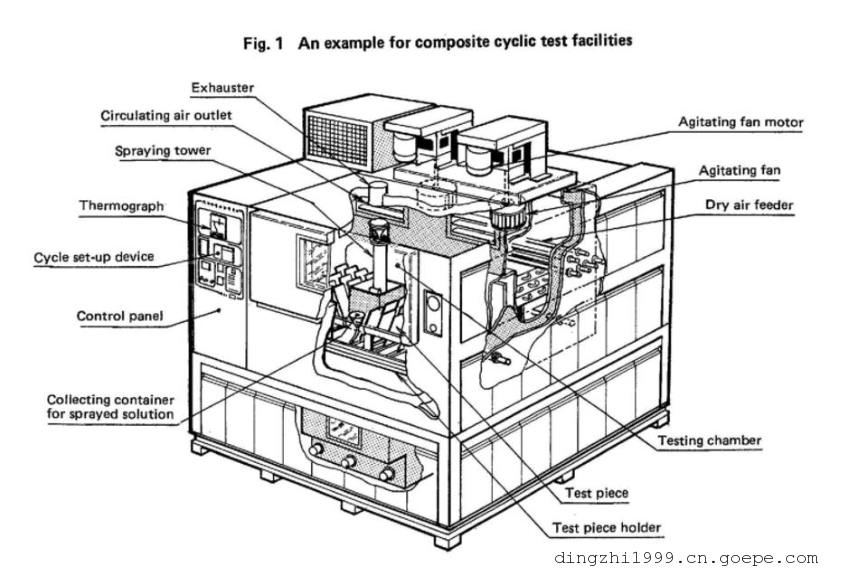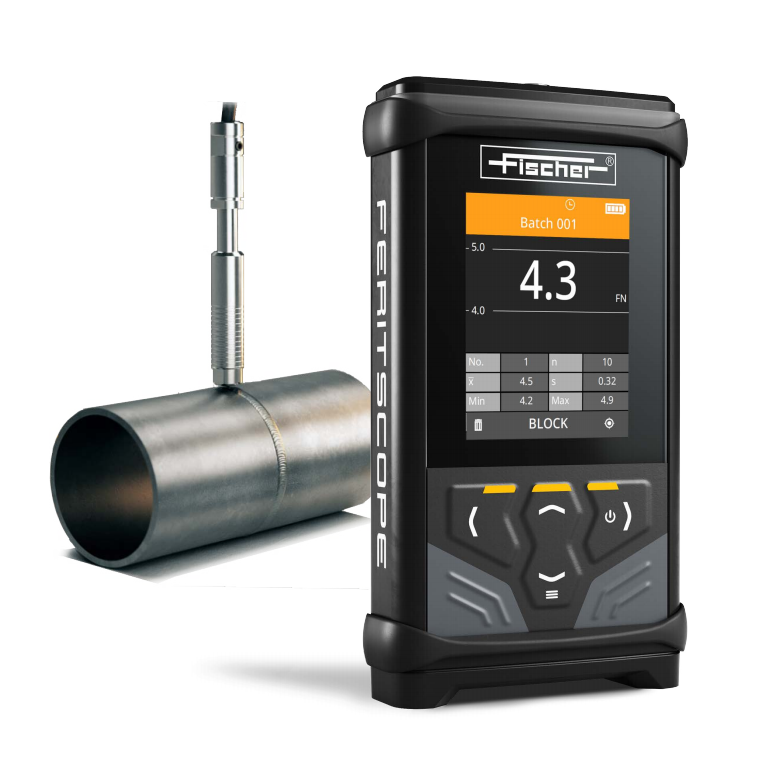
1. Scope
This standard specifies a method to determinecorrosion resistance of steel sheets for auto-mobile uses by a cyclic corrosion test.
2. Definitions
Definitions of major terms used in this standard shall be as follows.
- Cyclic corrosion test
A test in which a cyclic atmosphere consisting of salt spraying, drying and wetting is repeated in order to approximate to and activate a natural environment.
- Steel sheets
A general name covering cold-rolled steelsheets, hot-rolled steel sheets, and steelsheets coated on these rolled steel sheets.
- Unpainted panels
The steel sheet panels referred in(2)above which are naked state without any coating thereon such as painting forautomobile uses.
- Perforation corrosion
A phenomenon to produce reduction of sheet thickness caused by a corrosion on a steel sheet which propagates along withthe direction of the sheet thickness.
- Under-film corrosion
A phenomenon of paint-film blisteringcaused by propagation of corrosion originated at an interface with a paintfilm on a painted steel sheet (paintedPanel).
3. Type of test
The type of test shall be as classified in Table1 according to type of materials to be used.
Table 1
| Kinds |
Type of test |
| Unpainted panel |
Cyclic corrosion test |
| Painted panel |
4. Testing method
The testing method is such that a test piece shall be repeatedly exposed in a cyclic atmosphere consisting of salt spraying, drying and wetting maintained under aspecified condition so as to evaluate perforation corrosionresistance for a unpainted panel or a underfilm corrosion resistance for a painted panel.
- Test conditions
The test conditions shall be as shown in Table2.
| |
ltem |
Condition |
| 1 |
Salt water spraying
(1)Temperature
(2)Concentration of salt |
35+ 1°C
5±0.5%
Others shall conform to JlS Z 2371 |
| 2 |
Drying
(1)Temperature
(2)Relativé humidity |
60±1°C
20-30% RH |
| 3 |
Wetting
(1)Temperature
(2)Relative humidity |
50±1°C
95% RH and over |
| 4 |
Duration and content per cycle |
8 hours
Salt spraying: 2 hours
Drying:4 hours
Wetting:2 hours
(including time for each change respectively) |
| 5 |
Time required in changing condition(Times required to reach the temperatureand relative humidity specified for thatcondition after changing to the condition.) |
From spraying to drying:< 30 minutes
From drying to wetting:<15 minutes
From wetting to spraying: <30 minutes
(Spraying shall be, inprinciple,momentary) |
| 6 |
Test piece holding angle |
15 ~ 20° to the vertical line |
6. Test facilities and equipment
(1)Test facilities
The test facilities to be required for this test shall consist of the salt spraying tower,tank of salt water for test, test piece holder,collecting container for sprayed solution, testing chamber equipped with a temperature controller,salt water supply tank,compressed airfeeder,humidifier, dry air feeder, exhauster,and other necessary devices.
The test facilities shall satisfy to set upthe specified test conditions as well as the conditions required as follows.
- The testing chamber shall havecapacity of 0.4'm³ and over. The shape and dimensions have no restriction.
- The ceiling or top cover of the testing chamber shall be so designed that the solution deposited on that place does not drop off onto the.test piece.
- Corrosion resistive materials shall be used for the facilities..
- The construction of the facilities shall be so designed that the temperature and sprayed salt water inthe testing chamber shall not be influenced from the outside air, and the solution dropped from the testpiece shall not be reused for furthertests.
- The test piece holder shall hold the test piece at the specified angle.
- The collecting container for sprayed solution shall be a clean container having a horizontal collecting areaof 80 cm and located at least two positions where the uniformity of salt waterspraying may be confirmed. For example, at a place near the test piece, one is located near thesalt spraying tower, and another is far away.
- The humidifier shall have a capability to set up to the specified wetting condition.
- The dry air supplier shall have a capability to set up to the specified drying condition.
- The exhauster shall be so designed that the salt water spraying is not influenced from the outside wind pressure.
- The maintenance control of the test facilities shall be properly achievedso as to always obtain the specifiedconditions.
- A typical example of the test facilitiesshall be as shown in Fig. 1.
- Point micrometer.
This is a device to measure the positionat which the sheet thickness is decreasedby corrosions,and it shall have capability to measure a range of 1/1000 mm.An alternative device may be used if ithas capability to measure the equivalent range.
- Balance
This is to measure corrosion weight loss,which shall be capable to measure avery small amount as fine as 1/10,000 g
- Tapes for masking
The tapes shall be used for masking aportion on a test piece where shall notbe subjected to a test,thus it shall protect the masked portion from salt water and moisture,and shall be freefrom peeling off during a test.The poiyester adhesive tapes conformingto the requirements specified in JlSC2338 are suitable for this purpose.
- Tapes for peeling-off
Cloth adhesive tapes specified in JlS Z1524 having width of 25 mm or equiv-alent shall be used.
(6)Cutter knife
A half side cutter made from SK2 specified in Jls G 4401 having width of approximately 18 mm shall be used.
7.Reagent
(1)Salt solution to be used for salt spraying
The saltsolution shall be a neutralsodium chloride solution and shall con.form to the requirement specified in 6of JlS Z2371(Methods of neutral saltspraying testing).
(2)Corrosion product removing solutionA solution containing 20% diammoniumhydrogen citrate specified in JlSK 8284shall be used,except that,upon agreement between the purchaser and manu.facturer,some other suitable means maybe adopted.
8. Test specimens
The test specimens shall be as follows.
8.1 Shape and dimensions
The shape and dimensions shall be, in prin.ciple,aflat sheet of 70 x150 x0.7 mm indimensions,:except that,upon agreementbetween the purchaser and manufacturer, testpieces with other suitable shape and dimen.sions may be adopted.











